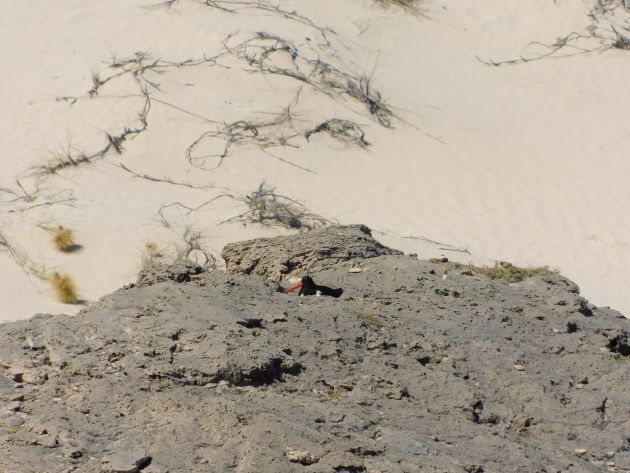
As I sit at my desk writing this post about the latest attempt at breeding for one of our pairs of Pied Oystercatchers I realise I have written 677 posts now for this website. This pair of Pied Oystercatchers are using the same nest site as last year, which does make it easy to find. The nest site has moved occasionally since I first observed one on Cable Beach in 2000. If there are changes to where people walk through the dune systems then they will adjust their nest site accordingly. This particular nest site is the furthest back from the beach during this time period and the individually marked male Pied Oystercatcher “A1” has been attempting to breed here since 2008.
This rocky area high up beyond the beach sand offers great camouflage and protection. The Pied Oystercatchers can see far and wide and monitor the area for threats from ground level and above. The photo below shows the actual nest with the eggs in, but that may not be initially clear to you, so I have underlined them in a copy of the photo below.
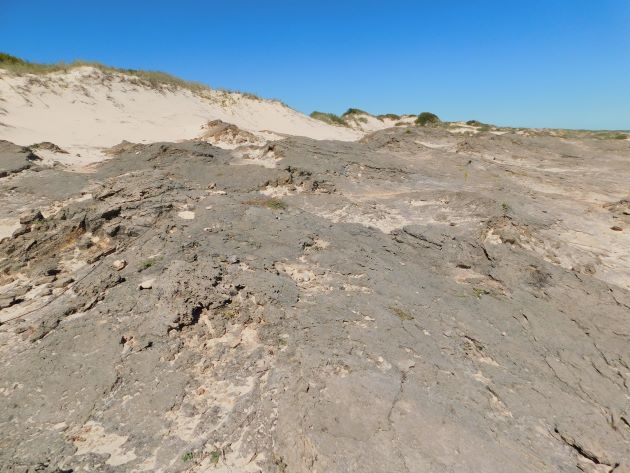
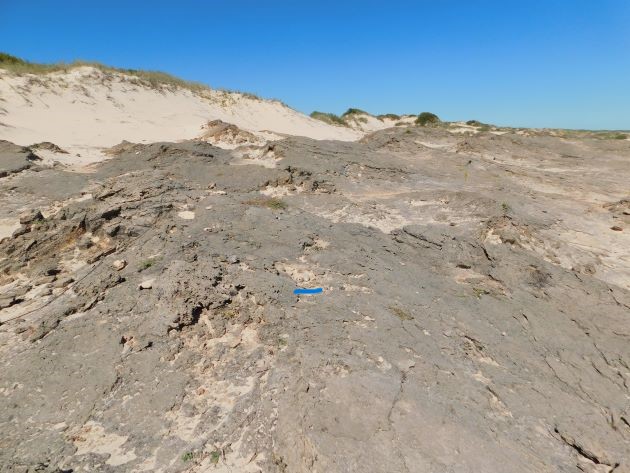
Eggs in a Pied Oystercatcher nest
I always walk by briefly to confirm the number of eggs, but it is very rarely more than two eggs in Broome. The colour variation can be quite extreme and there is always enough variation in the eggshell pattern to identify the individual eggs. I have also noted the eggs mostly appear to point in different directions, but they are also constantly being rotated by the parents. Both parents are responsible for the incubation, which takes twenty eight days.
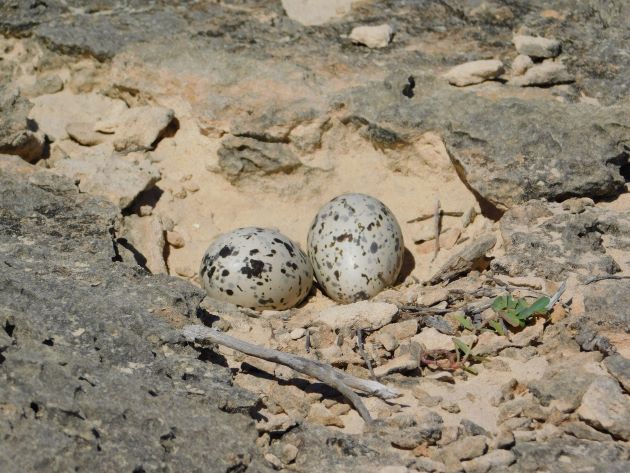
Pied Oystercatcher eggs
It is Winter here in Northern Australia which means plenty of cloud-free blue sky and there are definitely worst places to be sitting for twenty eight days watching the world go by!
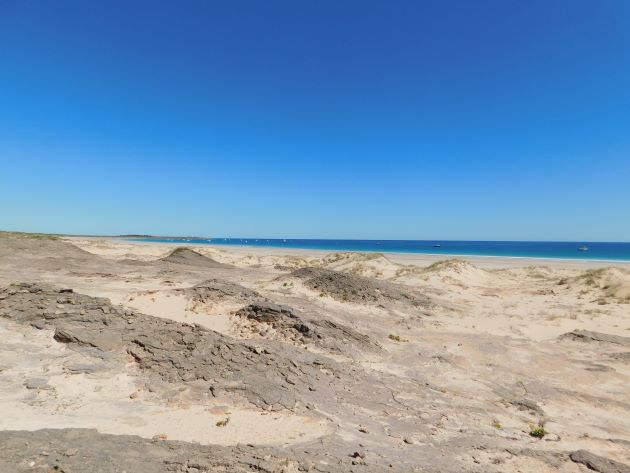
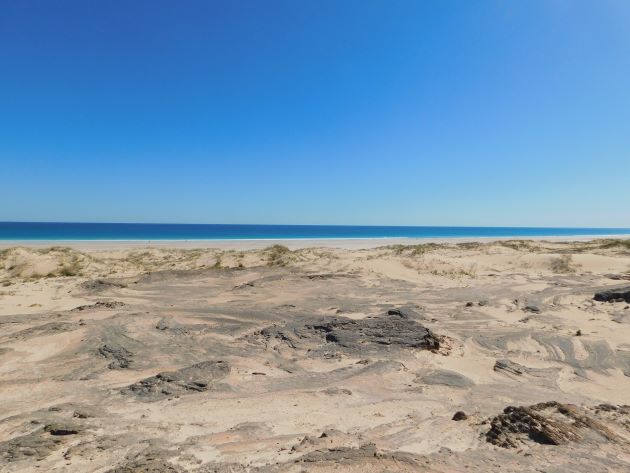
View from the nest site towards the Indian Ocean at Cable Beach
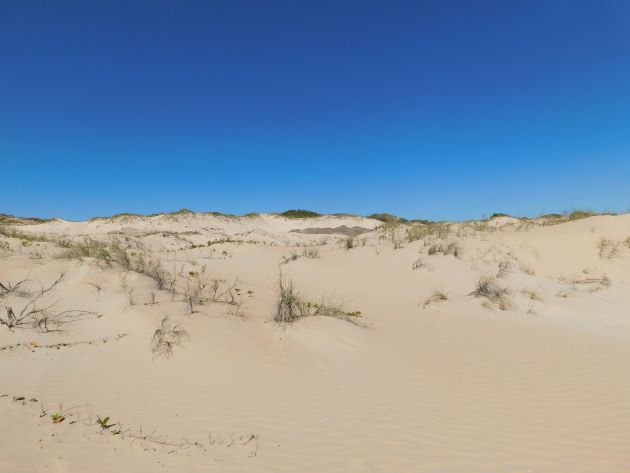
View from the beach looking back at the distant nest site
Very occasionally I observe “broken wing” display from this pair of Pied Oystercatchers. I suppose they know me! They will do it for other threats as a distraction to protect their eggs or chicks. A threat from above when they are nest-sitting tends to involve the adult going as flat as possible.
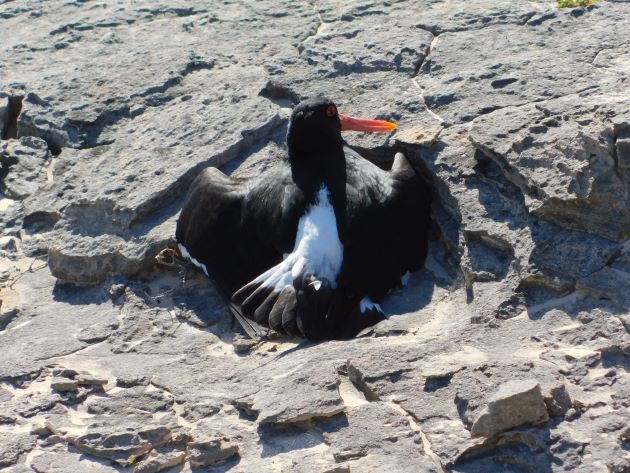
Pied Oystercatcher “broken wing” display
It is always obvious when the eggs are due to hatch, because both parents will remain at the nest rather than one being absent feeding. They can be two or three kilometres away, but if the nest-sitter calls the other one will soon arrive to help protect. I think they quite possibly have much better hearing than you would give them credit for. The male Pied Oystercatcher is standing guard whilst she does the sitting in this photo below.
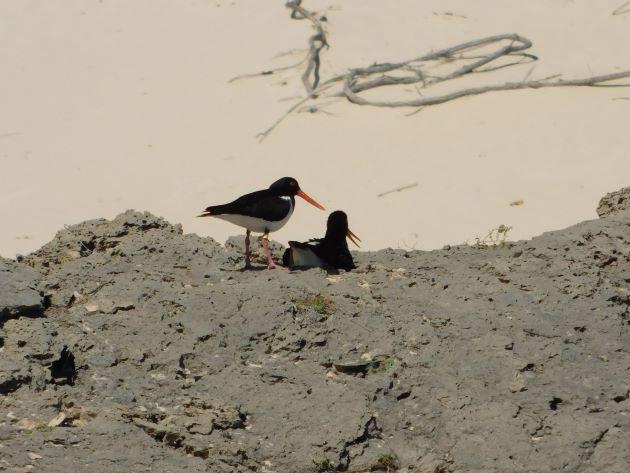
Nest site
On my subsequent visit I was not surprised to see them still at the nest site, but it was not until I looked at my photos at home that I realised that I had a photo of a Pied Oystercatcher chick standing in the nest. Once again I have placed a copy of the photo below showing where the heavily camouflaged chick is.
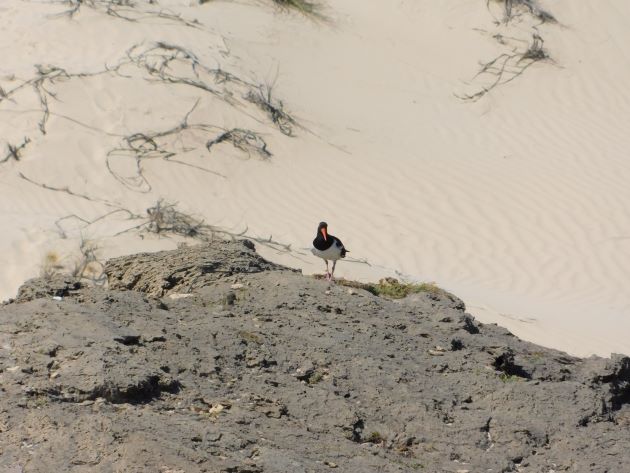
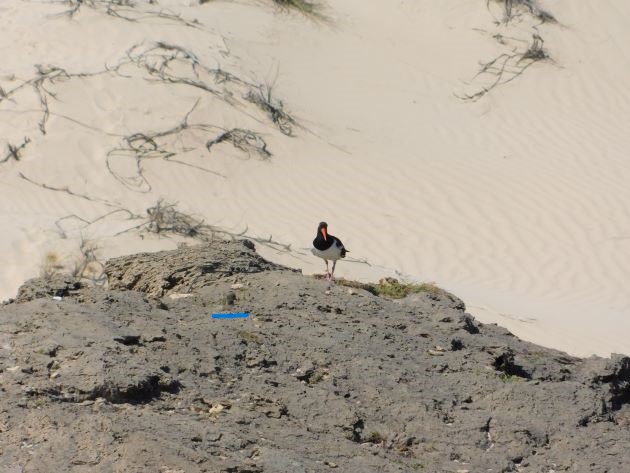
Pied Oystercatcher adult and chick
I had walked widely around the area and taken a few photos and noticed that there was now one egg and one chick and of course they were still well camouflaged.
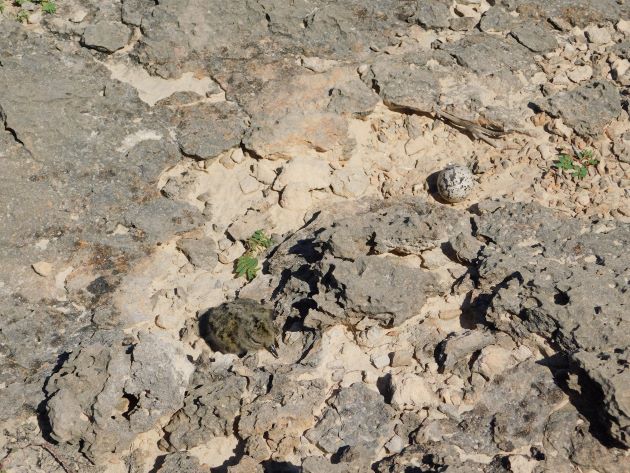
Pied Oystercatcher chick and egg at the nest site
Over the following days I would return to the beach and walk along the high tide mark. I could observe where the family had come down to the ocean at night on the big tides. The footprints in the soft sand showed their movements as they moved closer to the high tide area. I could see their preferred vegetation for hiding the chicks.
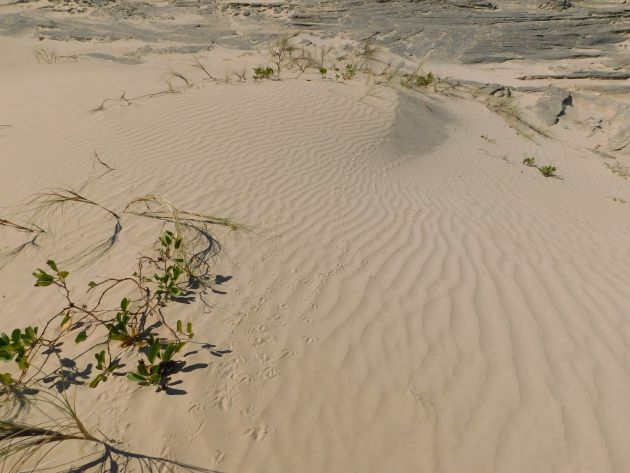
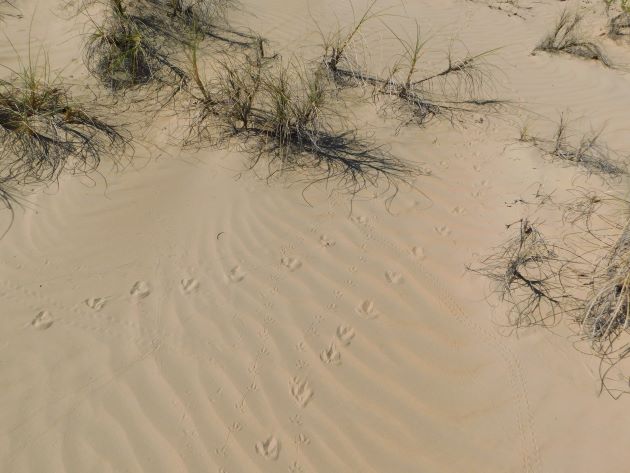
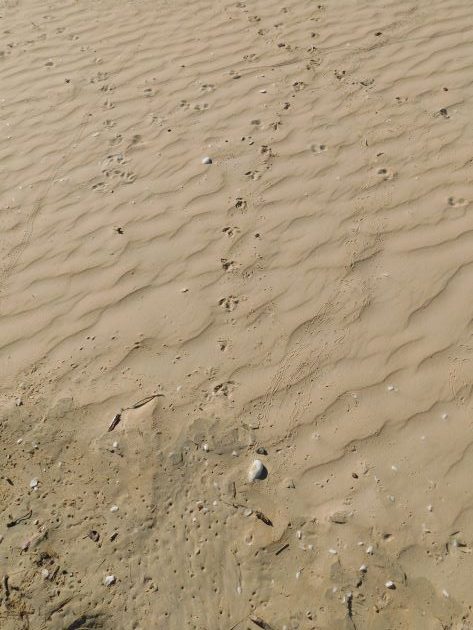
Pied Oystercatcher family footprints in the soft sand and down to the high tide mark
The two Pied Oystercatcher chicks were obedient and hid when they were told by their parents. They would sometimes choose different hiding spots and remain completely motionless until the parents made a different call and they knew that they could then come out. As an observer the small footprints that they made allowed me to quickly observe the hiding spot and move off.
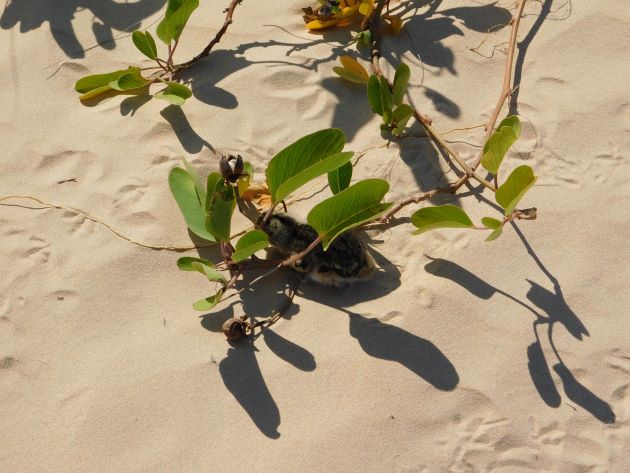
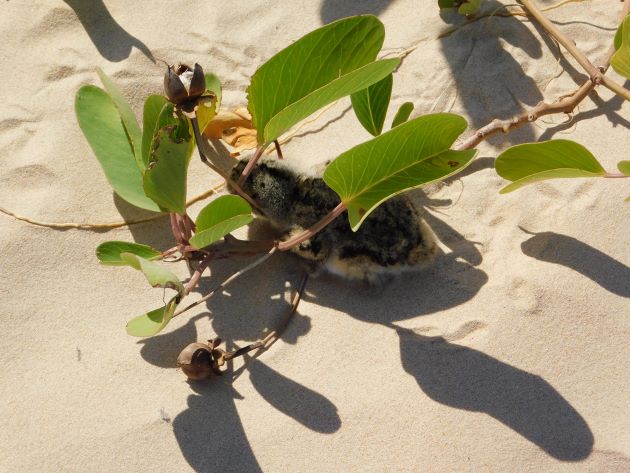
Pied Oystercatcher chick hiding in vegetation
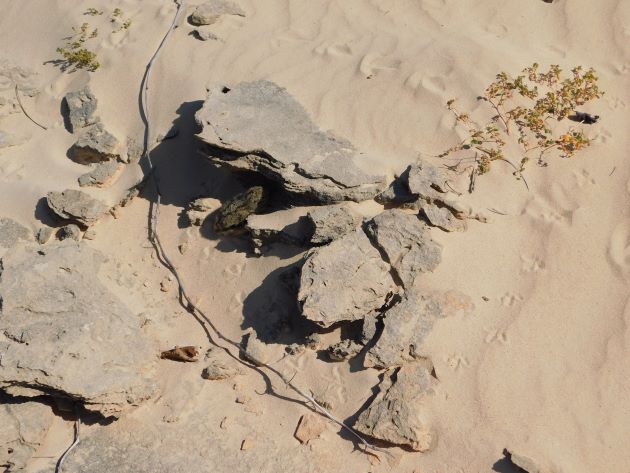
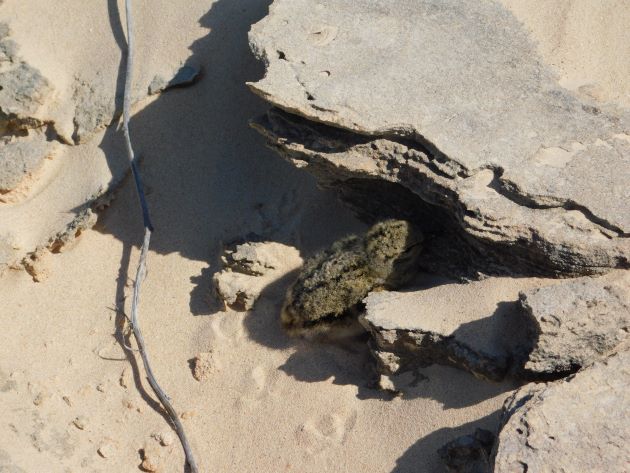
Pied Oystercatcher chick hiding beside a rock
Sometimes the two Pied Oystercatcher chicks would go to the same vegetation if they were close together. Often they would be with one adult each, but they had started to move North over a few days and walking together the chicks could hide together. Once again their footprints in the soft sand was a giveaway! You will note that the footprints are pretty large for a small bird, but they appear to hatch out ready for walking.
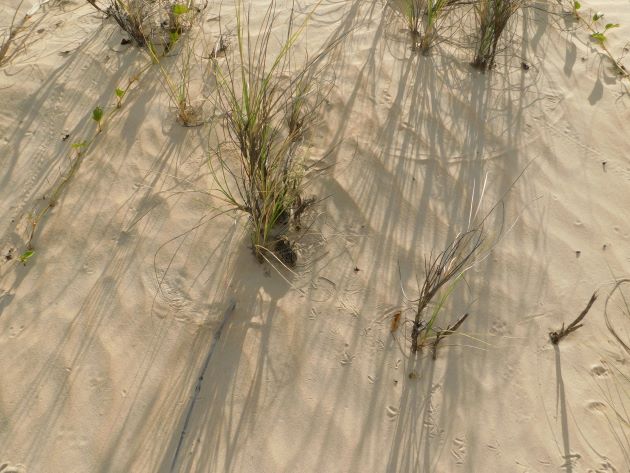

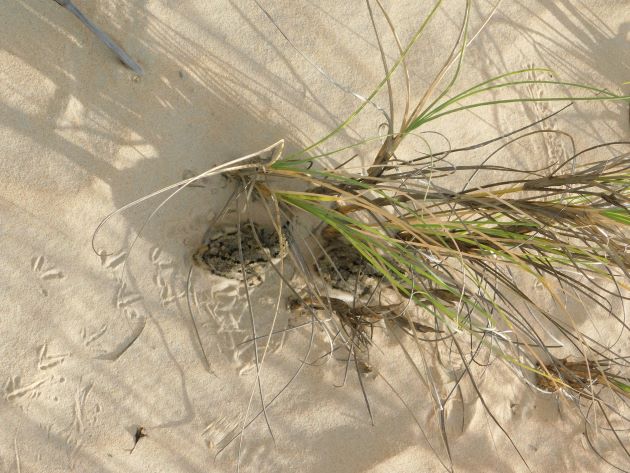
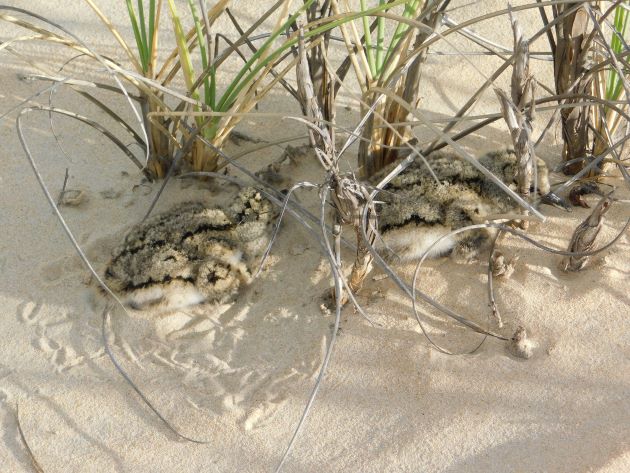
Following the footprints brings you to the two Pied Oystercatcher chicks
The parents were moving North through the busiest section of Cable Beach, but trying to keep the chicks safe in the dunes.
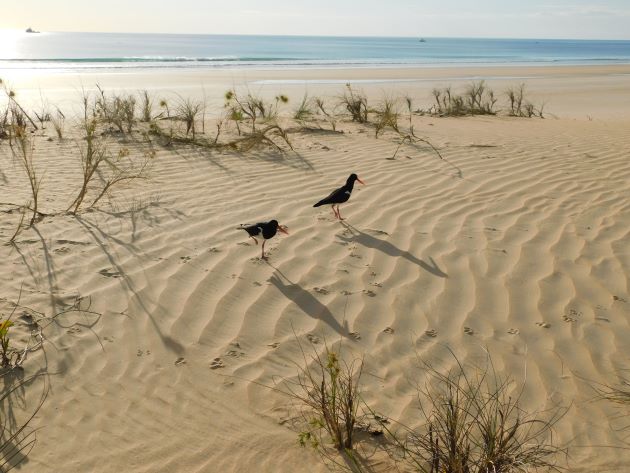
Pied Oystercatcher parents
I wish I could have convinced the Pied Oystercatchers to not keep going North and try and get through the four-wheel drives, people and dogs. I understand they knew the food was better to the North and we all take risks, but……
Anyway, within days there they were. Alone. Nothing to do for a few days other than stand around on a rock together and contemplate another attempt at breeding. This is no different to any other year if you have followed my weekly posts over all of these years. Normally within ten days there will be two more eggs, another twenty eight days of sitting around watching the tide go in and out and then the hard work of protecting vulnerable chicks. 2014 was our most successful Pied Oystercatcher season with three chicks from one clutch surviving to fledge. One large Pied Oystercatcher family!
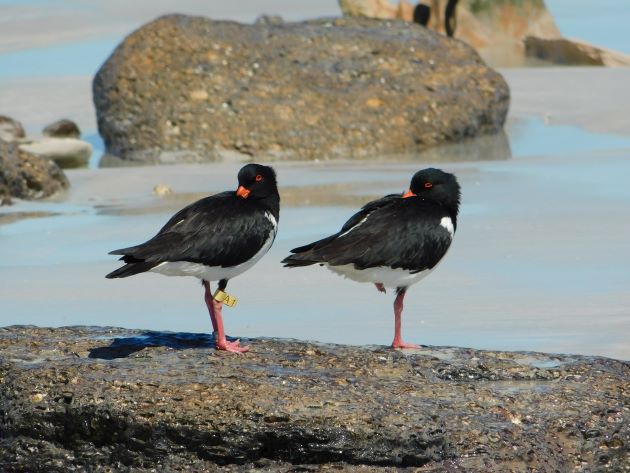
Contemplating another attempt at breeding in 2023
So, it is at this point that I hope over the past thirteen years of weekly posts from mostly Australia, but also other places that we have visited around the World, that you may have been inspired to travel and enjoy your local natural surroundings.
In January this year I did a post to enable you to find some of the posts that I have written more easily if you were wondering where you might like to go birding in Australia. I hope some of you may have explored some of these locations.
Other posts since then have been filed under “birding” and have involved mostly around Broome with a few recent visits to places around Melbourne.
My 677 posts are under Clare M and I will apologise now if some of the photos have been lost “in space” over the past thirteen years! It might be too wet one day to go out and you can read my posts. You’ll need to ask yourself why you didn’t get to Australia yet!
Anyway, thank you everyone for reading and keep on enjoying birding wherever you are in the World. Maybe one day our paths will cross……


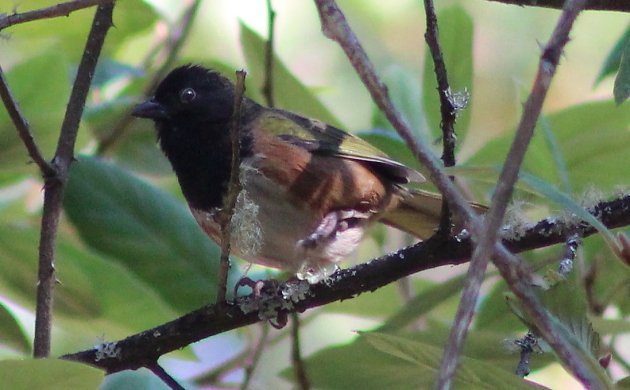
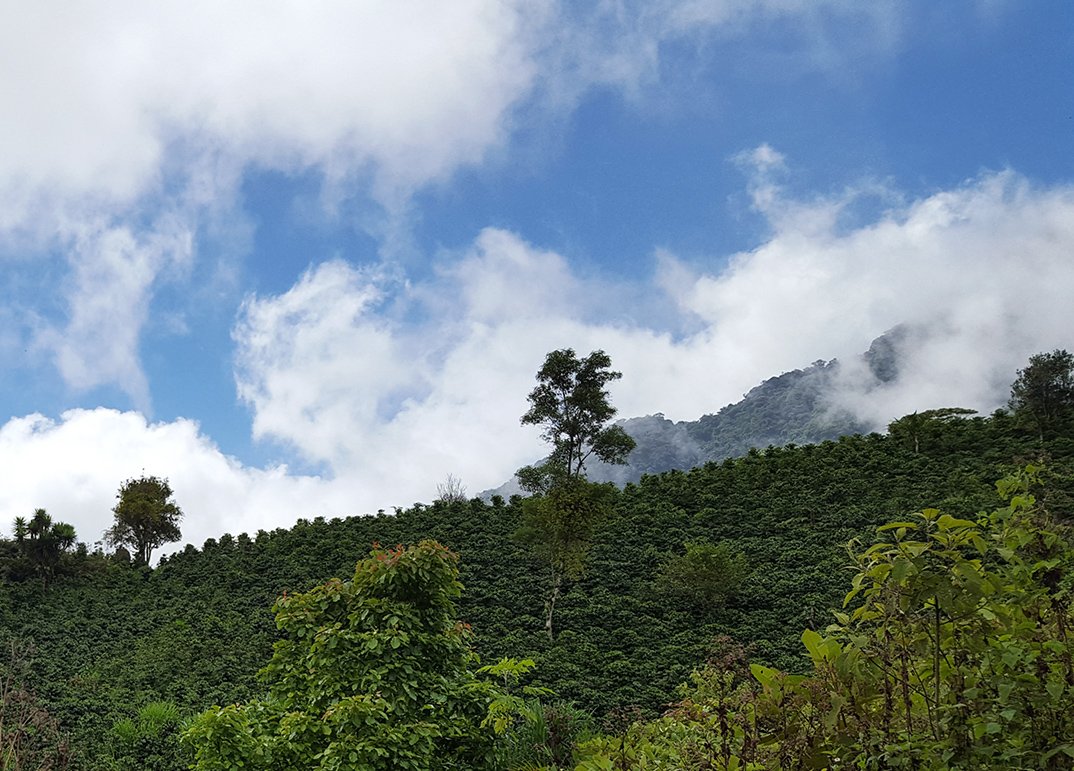
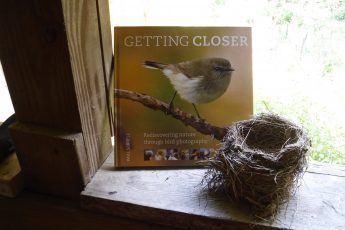

 New writers welcome – please contact us for details.
New writers welcome – please contact us for details.

















I always enjoy reading abut the Pied Oystercatchers, and like you, wish they would be more careful with those babies! Your observations are so precise, you really understand those birds. Thank you for providing the link to where to go birding in Australia. It’s great! I missed it last time, and now have it bookmarked.
Thank you! I enjoy your posts very much. Thank you for bringing Australia and Broome to me in Colorado, USA.
Congrats 🙂
Hi Clare,
It’s been a while since I commented. I’ve been reading your posts for at least six of your thirteen years of posting, so a bit of a late introduction to your fabulous blogs but I’ve already learned a lot! Your photos and blog today about the Pied Oystercatchers are wonderful. A real shame that they lose the chicks after taking such great care to move them safely from place to place. Fingers crossed for next time. Australia is definitely a place for me to visit one day. When I do, I look forward to visiting Broome and the beautiful Cable Beach.
Thanks everyone for your kind words.
I thank you for your excellent postings. I have enjoyed them and look forward to 677 more.
Such a great story, as have been all 600+ before this!! I truly look forward to many more years of your excellent work!
Thanks, James and Thomas…this is me slipping into obscurity, so no more weekly posts from this part of the world after 13 years.
Dear Clare–I was afraid you were saying good-bye when you wrote your post indexing many of your past writings, and now I know it’s true. I feel so sad, I loved reading about your life in Broome and elsewhere in Australia and the world. (I also feel sad about the Oystercatcher chicks, though I understand that this is “life.”) Thank you for sharing your and Grant’s lives with us for 13 years, it really is an achievement. Your posts about Melbourne were indeed very helpful when I visited there last year. I hope to return to Australia in the future and maybe on one of those trips we can meet in person. Till then, stay healthy, safe travels when you and Grant go on the road, and enjoy your Birds of Broome.
Thanks, Donna. We hope you get back to Australia before too long. There’s plenty to see in our huge continent!